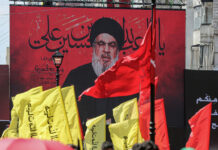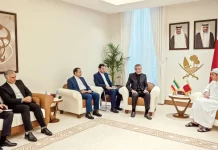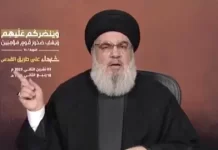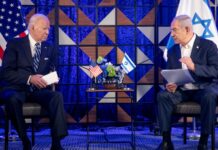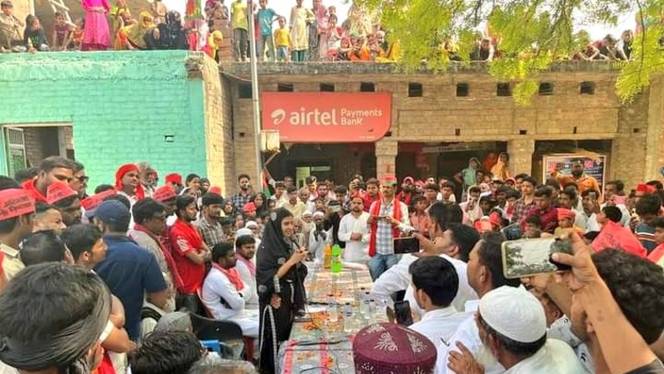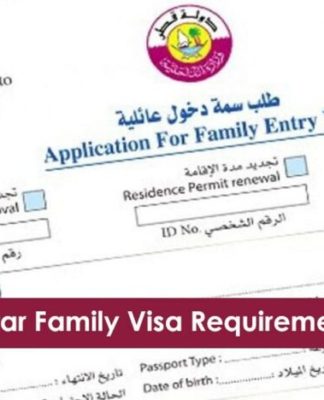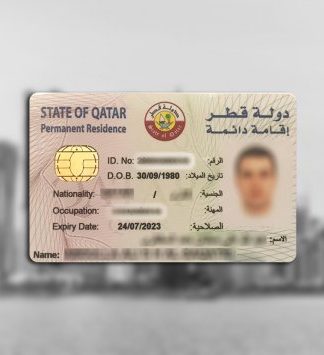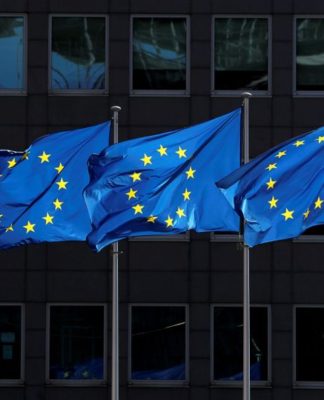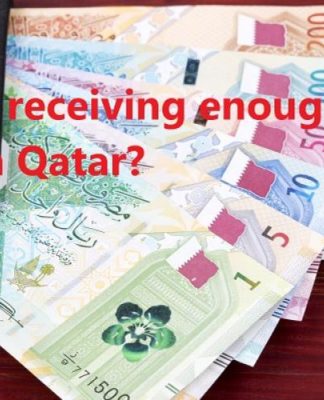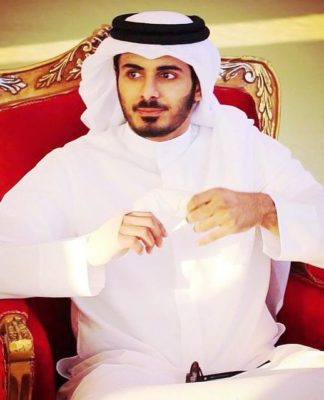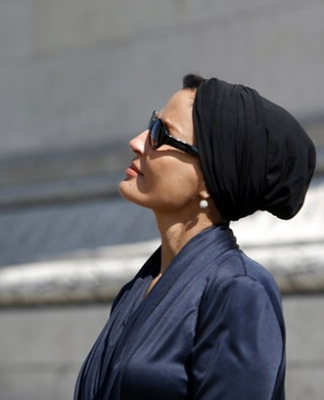OPINION
15 HOURS AGO
Muslim representation in India’s government falls, but hope persists
Despite the BJP’s continued dominance, the emergence of Muslim women and other leaders mark a notable change. Here’s what to know.
Nilosree Biswas
NILOSREE BISWAS
Iqra Hasan speaks to her future constituents in May 2024 in Uttar Pradesh, India. Hasan is one of two Muslim women elected to India’s federal government this year. Photo courtesy of Iqra Hasan on X.
OTHERS
Iqra Hasan speaks to her future constituents in May 2024 in Uttar Pradesh, India. Hasan is one of two Muslim women elected to India’s federal government this year. Photo courtesy of Iqra Hasan on X.
In India this year, the election was a crucial way to determine if the new government would be the representative of all its citizens. Spoiler alert: It’s not.
A country of 1.4 billion people, India has been going through a complex electoral process over the last two months. A majoritarian media frenzy (incorrectly) forecast the infallibility of the Bharatiya Janata Party (BJP).
The party fell short of its ambitious goal of winning 400-plus seats, achieving only 240 out of 573, and not even achieving a majority for the first time in three elections.
This year’s election was foremost a litmus test of India’s foundational values: equality, diversity, secularism, plurality. Elements that the Indian Constitution has set as its premise. So how did we land?
The patriarchy
Prime Minister Narendra Modi’s new cabinet is made of 72 ministers – 30 cabinet ministers, 36 ministers of state and five ministers of state with independent charge.
It’s not an anomaly that the majority of Modi’s cabinet is composed of Hindu upper caste males. In the last 10 years, India has become more patriarchal than ever, though the ruling regime, particularly Modi himself, has been “championing” Nari Shakti (women power).
But as the proverbial saying goes, “the proof of the pudding is in the eating.” There are only six women in the Union Cabinet, and Muslims cabinet members are conspicuously absent. Relevantly, the BJP fielded only one Muslim candidate from Kerela’s Malappuram, M.Abdul Salam, who lost.
And the National Democratic Alliance (NDA), the umbrella group of political parties helmed by the BJP, has zero Muslim representation, let alone Muslim women.
However, not all hope is lost.
Challenging stereotypes
A handful of Muslim women did capture seats in the Indian government this year, including only two at the federal level. One of them is Iqra Hasan.
Hasan, who just submitted her PhD proposal to the University of London’s School of Oriental and African Studies (SOAS), won by a margin of 69,116 votes. She defeated her closest competitor, Pradeep Kumar of the BJP, along with 12 other male candidates fielded by various parties.
Hasan hails from a Muslim landowning family in Kairana, in Uttar Pradesh. Her late father Chowdhury Munawar Hasan served both as a Member of the Legislative Assembly (MLA) and a Member of Parliament (MP). And her mother, Begum Tabassum Hasan, had won byelections in 2009.
Hasan said she was compelled to join politics after her brother Nahid was arrested in 2022 after being falsely implicated, and he and her mother were charged under the Gangster Act.
Her victory comes amid a longstanding narrative perpetuated by the BJP and other rightwing groups of Muslim women as uneducated and dominated by their menfolk.
Hasan surely does not conform to this stereotype. On the contrary she is a highly educated young statesman who had determinedly joined politics to bring about change.
The other Muslim woman who won at the federal level is Sajda Ahmed from Uluberia, West Bengal.
Added to these distinct wins is the historical victory of Sofia Firdaus, an Indian National Congress candidate from the Barabati-Cuttack constituency in Odisha. Firdaus is the first Odiya Muslim woman to become a member of the State Legislative Assembly since Independence in 1947.
Firdaus, who has a college degree in civil engineering and graduated from the Indian Institute of Management (IIM), contested the election after her father Congress MLA Mohammad Moquim was charged with a legal case, days before the polls opened.
These victories also hopefully mark the end of a particularly vitriolic backlash against India’s Muslim population, both physically and psychologically.
Joining politics under complicated situations and going on to win, the three officials are empowered Muslim women who have already proven widely circulated misconceptions about them wrong.
Their stories reflect the confidence needed to take on the mighty ruling party. These victories also hopefully mark the end of a particularly vitriolic backlash against India’s Muslim population, both physically and psychologically.
And their arrival in government comes at a good time for countering majoritarianism, as the election results have shown that subversion is “possible” even in the current climate.
Otherwise, how else would a “Pappu” (a pet name in Hindi, perceived as naive, innocent, in this case hinted as useless) become the unanimous opposition leader representing all Indians at the Parliament?
Looking to the past
Interestingly, during this general election, Prime Minister Narendra Modi likened his tenure with India’s first leader Jawaharlal Nehru, the only other prime minister to have ruled the country for three consecutive terms.
REUTERS
Rahul Gandhi, a senior leader of Congress party, speaks during a media briefing at the party headquarters in New Delhi, India, June 6, 2024 (REUTERS/Priyanshu Singh).
Also reminiscent of the past was the transformation of a fifth-generation political “loser” – with Rahul Gandhi who hails from the most powerful, and most “criticised” political family – emerging as the undisputed leader of the oppressed, reinventing himself as a winner.
On the election trail, Gandhi countered divisiveness and bigotry with inspiring speeches like “Nafrat ke bazaar mein Mohabbat ki dukan (a shop that sells love in the market of hatred)” and by leading two of the longest cross-country marches – Bharat Jodo Yatra (Bharat Jodo means – unite India) and the Bharat Jodo Nyay Yatra over the last two years.
Immensely successful, these marches were hailed and joined by millions from all classes, castes and religions, defying fear, recreating inclusiveness and agency for the people.
Less than two months after his most recent march, Gandhi went on to become the leader of the Opposition – a role stupendously important in a democracy.
On his side he has a small league of Muslim Parliamentarians, 24 to be precise, including Iqra Hasan and Sajda Ahmed, who will show up in the opposition once the Lok Sabha sessions begin.
Contextualising Muslim representation
Muslims were once integral to the political fabric that ran through India, though independent India’s Muslim politics and participation was not simplistic.
Participation in the newly formed India’s government came on the heels of the colossal Partition.
“The trauma of the Muslim community after partition is often compared with what it suffered at the time of the collapse of the Mughal empire,” writes Balraj Puri, one of the prominent journalists, political commentator since Independence.
“But at that time, the community retained its self-esteem and goodwill of its compatriots. This is borne out by the fact that a Muslim was accepted by the whole nation as a symbol and leader of the first war of independence in 1857.”
GETTY IMAGES
Grieving Muslim at grave site of her 4-yr-old child who died of starvation when their “Pakistan Special” train was stopped for 4 days by Sikh violence during their migration to Pakistan, during Partition, 1947 (Margaret Bourke-White/The LIFE Picture Collection/Getty Images).
Relevantly Puri here refers to the unanimous acceptance of Muslim leadership and read of the last Mughal emperor Bahadur Shah Zafar’s in the first war of Independence (1857) against the British colonisers followed by its consequence.
In the next 100 years, partition happened, resulting in an unfathomable displacement of Hindu, Muslims and Sikhs on either side of the borders. Beyond the irreplaceable loss, once India became a new nation, the subject of Indian Muslims’ political reality and representation emerged.
Faced with questions of loyalty towards which they chose not to leave, worried and uncertain about their future, Indian Muslims’ existence was suddenly in peril.
After decades, the ghost of gloom and uncertainty returned to haunt them within the last decade when the BJP came into power in a landslide victory in 2014, transforming the political landscape of India.
The next 10 years would result in the marginalisation of the Muslims in the public realm, the rise of divisive rhetoric and the unleashing of violence against them. Unfortunately, there has been no charismatic leader to pull them out of it.
The last time Muslims felt such political despair in 1947, they had Maulana Abul Kalam Azad, described as the “lonely and tragic figure” in Muslim politics of India.
According to Puri, Azad gave a “touching and inspiring speech” at the Delhi Muslim Convention on November 4, 1947. In it, he called upon Indian Muslims “to take the pledge that this country is ours, that we belong to it and that fundamental decisions of its destiny will remain incomplete till we participate in them.”
He added that there was no place for “either cowardice or frenzy in a Muslim.”
Following that speech came the guarding shoulder of Nehru, the secular architect of independent India. At the first general elections in 1952, the number of Muslim MPs clocked 25.
According to historian Mushirul Hassan, Muslims have long been aligned with the Congress party, offering their support to the secular-minded Nehru when he was in office. And Muslim candidates in the party often saw the most electoral success in Uttar Pradesh, the country’s most populous state.
Throughout the decades, Congress has continued to field Muslim candidates. The numbers reached an all-time high of 49 equivalent to 9 percent in 1980, followed by 45 in 1984, only to slide down again and never crossing the 40 mark through now.
Today, the numbers have hit another low of 4.42 percent, with no Muslim MP from the ruling NDA coalition. The 24 Muslim candidates elected are from the opposition of which Congress has nine Muslims, followed by others. Relevantly according to the last census in 2011, Muslims constitute 14 percent of the country’s population.
Looking ahead
Although there’s still no Muslim representation in the cabinet itself, change is afoot.
For the first time in 10 years, the BJP did not win a majority of 272 seats. To that Uttar Pradesh, the state often regarded as the “game changer,” asserted more importance to life issues like poverty, employment, women’s safety, infrastructure discarding the rhetoric of hyper religiosity.
AFP
Security personnel stand guard at the illuminated Ram temple following its consecration ceremony in Ayodhya in India’s Uttar Pradesh state on January 22, 2024 (AFP/Money Sharma).
Nowhere was this more apparent than in the Faizabad constituency, which went to the Samajwadi Party.
For the unversed, Ayodhya the temple city falls within the Faizabad constituency. It is where Modi inaugurated the Ram Temple to the masses earlier this year, on the site of the former Babri mosque. Going into the election, the BJP had considered the temple to be one of its greatest achievements.
But the economy won out over religion politics during this election, showing the unimaginable can happen and reality is manifold.
So, does Muslim representation in India’s government look too bleak? Not really for the motley 24 who are part of an Opposition led by a man who has shown that change can happen despite all odds. The rest, time will tell.
SOURCE: TRT WORLD
Nilosree Biswas
Nilosree Biswas
Nilosree Biswas is an author and filmmaker who writes about history, culture, food and cinema of South Asia, Asia and its diaspora.
peachtreespeaks





